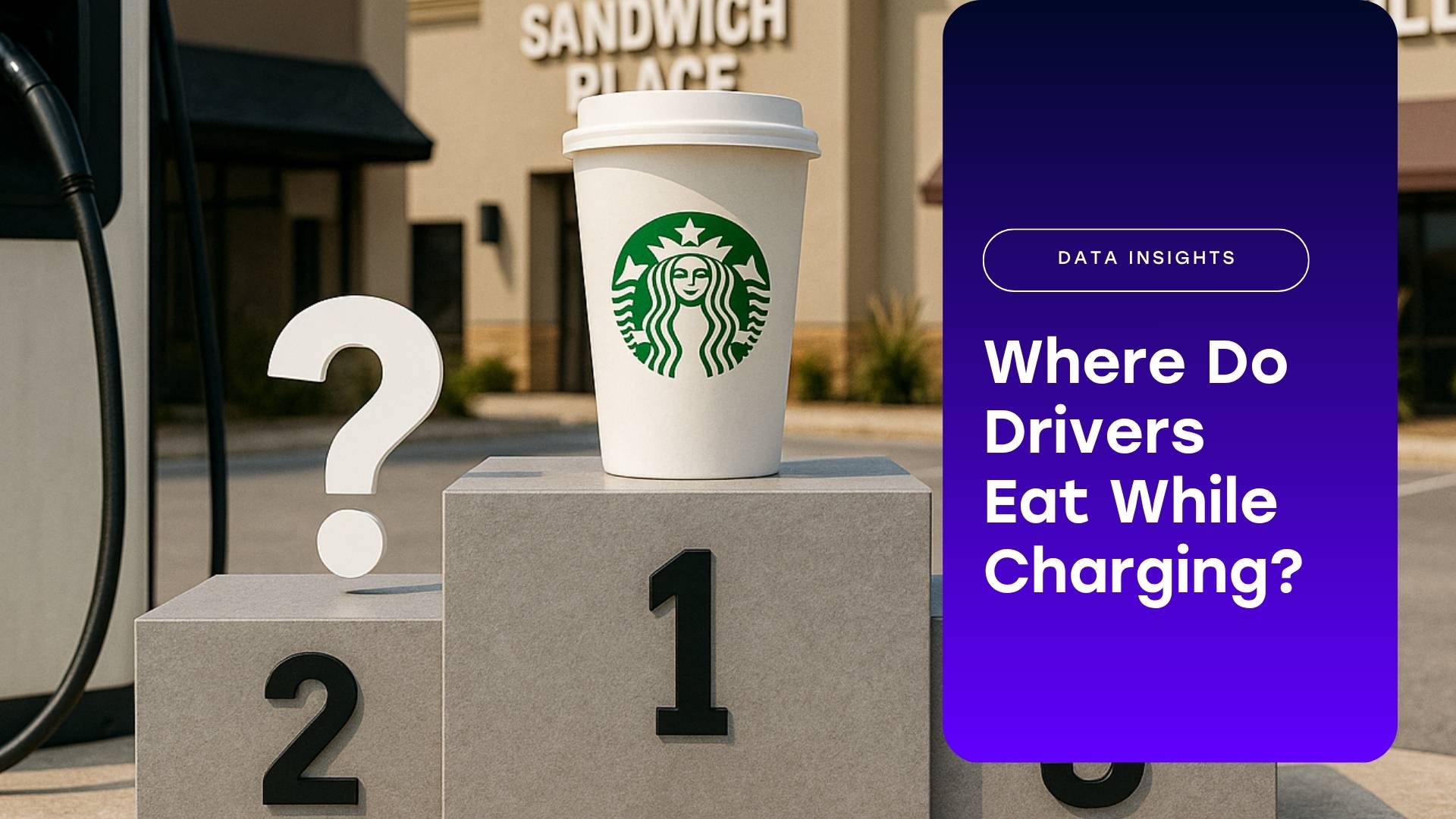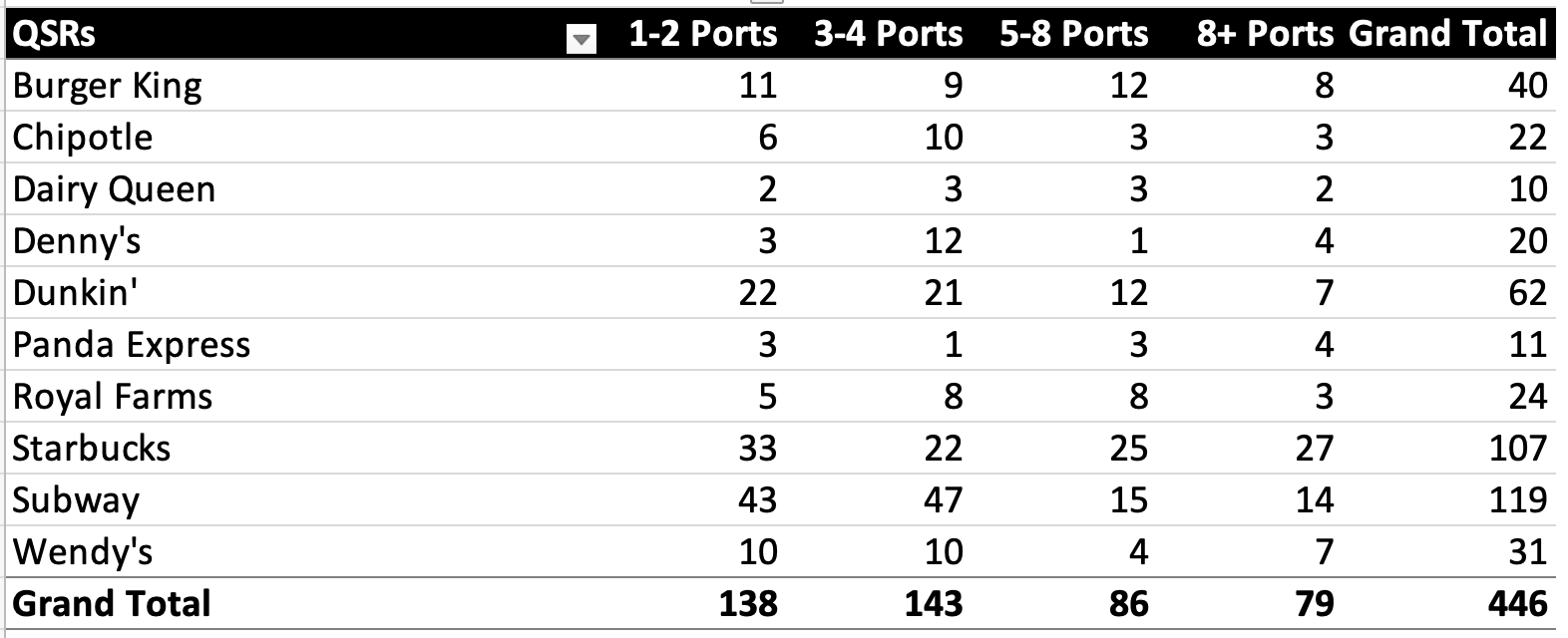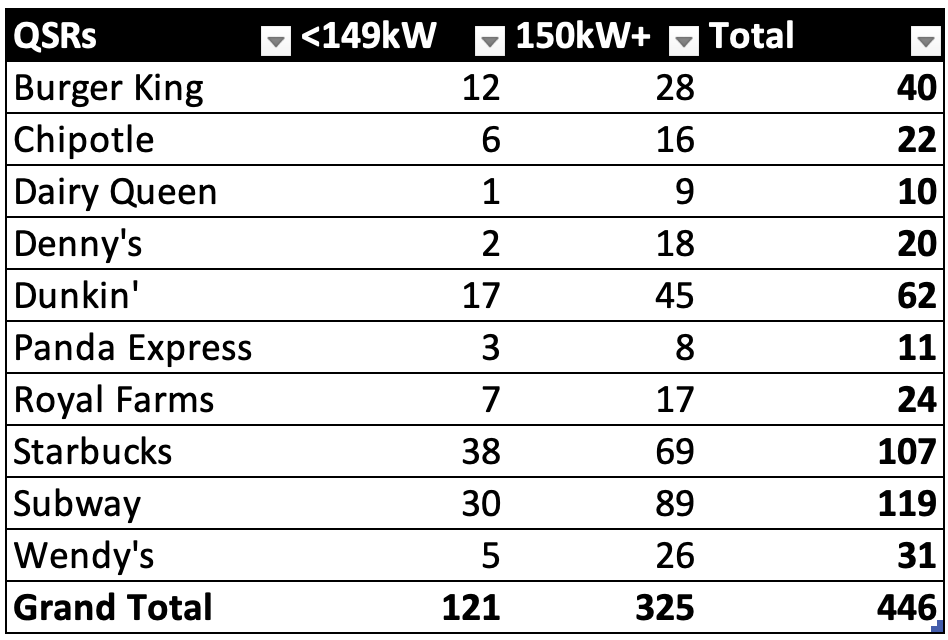Where do EV drivers eat while charging?

Summer is road trip season in America. Between July and August 2025, millions of drivers crisscrossed the country — and for EV owners, every long journey comes with a question: where do I charge, and what do I do while I wait?
Charging isn’t just about plugging in. It’s about comfort, coffee, food, and time well spent. At Paren, we wanted to know: which Quick Serving Restaurants (QSRs) are truly capturing EV drivers’ attention during charging stops?
So, we dug into the data.
Our Methodology
- Dataset: US fast charging sessions nationwide, July 1 – August 31, 2025
- Scope: QSRs located within 50 meters of a fast charging station
- Filter: Only QSRs present at five or more stations; convenience stores excluded
- Paren datasets used: US Nationwide Metadata, Utilization, Amenities
Takeaway #1 – Starbucks Dominates
If you had to bet on one brand winning over EV drivers, Starbucks wouldn’t be a bad choice — and the data proves it.
- 12 networks have at least five stations within 50 meters of a Starbucks, for a total of 105 charging sites near the coffee giant.
- Over the two-month summer period, we counted 359,340 charging sessions near Starbucks — twice as many as Subway, the second-ranked QSR.
- Drivers stayed longer too: 34 minutes on average, compared with the 30-minute average at other QSRs.
The combination of coffee, WiFi, seating, and brand familiarity makes Starbucks the natural winner for EV drivers who need both a charge and a break.

Takeaway #2 – More Stations ≠ More Sessions
At first glance, Subway looks like an EV-friendly partner: it has 118 stations within 50 meters, operated by 13 networks. That’s the second-highest station count in our analysis.
But utilization tells a different story:
- Subway drew 174,770 sessions, but that translates to just 1,481 sessions per location — the lowest in the top 10.
Contrast that with Panda Express:
- Only 11 stations operated by seven networks were near a Panda Express.
- Yet, those sites recorded 68,956 sessions — averaging 6,268 sessions per location, the highest in our dataset.
This means that scale alone doesn’t guarantee desirability. Brand power, site quality, and location context matter more.

Takeaway #3 – Fast Charging is the Norm
EV drivers pairing a meal with a charge aren’t willing to wait. Across the QSR dataset:
- 63% of stations had four or fewer ports, but distribution across port counts (1–2, 3–4, 5–8, 8+) was fairly even for most QSRs.
- 72% of stations delivered at least 150kW, signaling that fast charging is becoming the baseline expectation when dining nearby.
Two brands stood out: Dunkin’ and Subway, where over 70% of stations had just 4 ports or fewer. This could impact throughput during peak travel times.


Conclusion – QSRs as EV Magnets
In just two months, more than 1 million charging sessions were recorded within 50 meters of QSRs. Put differently: about 1 in 20 charging sessions this summer happened next to one of the top 10 QSRs.
- Starbucks is the volume leader, drawing the highest number of sessions and the longest dwell times.
- Panda Express surprises as the per-location leader, showing that fewer sites can still deliver outsized impact.
- And across the board, high-power charging (150kW+) has become the norm when drivers stop to eat.
For QSRs, this signals a growing opportunity: EV drivers aren’t just passersby, they’re a captive audience for 30+ minutes. For charging networks, it’s a reminder that brand adjacency can be as important as kilowatts.
As EV adoption accelerates, the big question is: will restaurants seek out charging partners, or will drivers continue to shape the map of desirable charging stops on their own?
💡 Want to dive deeper?
👉 Contact us to request your copy of the data, or book a meeting with our team to discuss insights for your network.